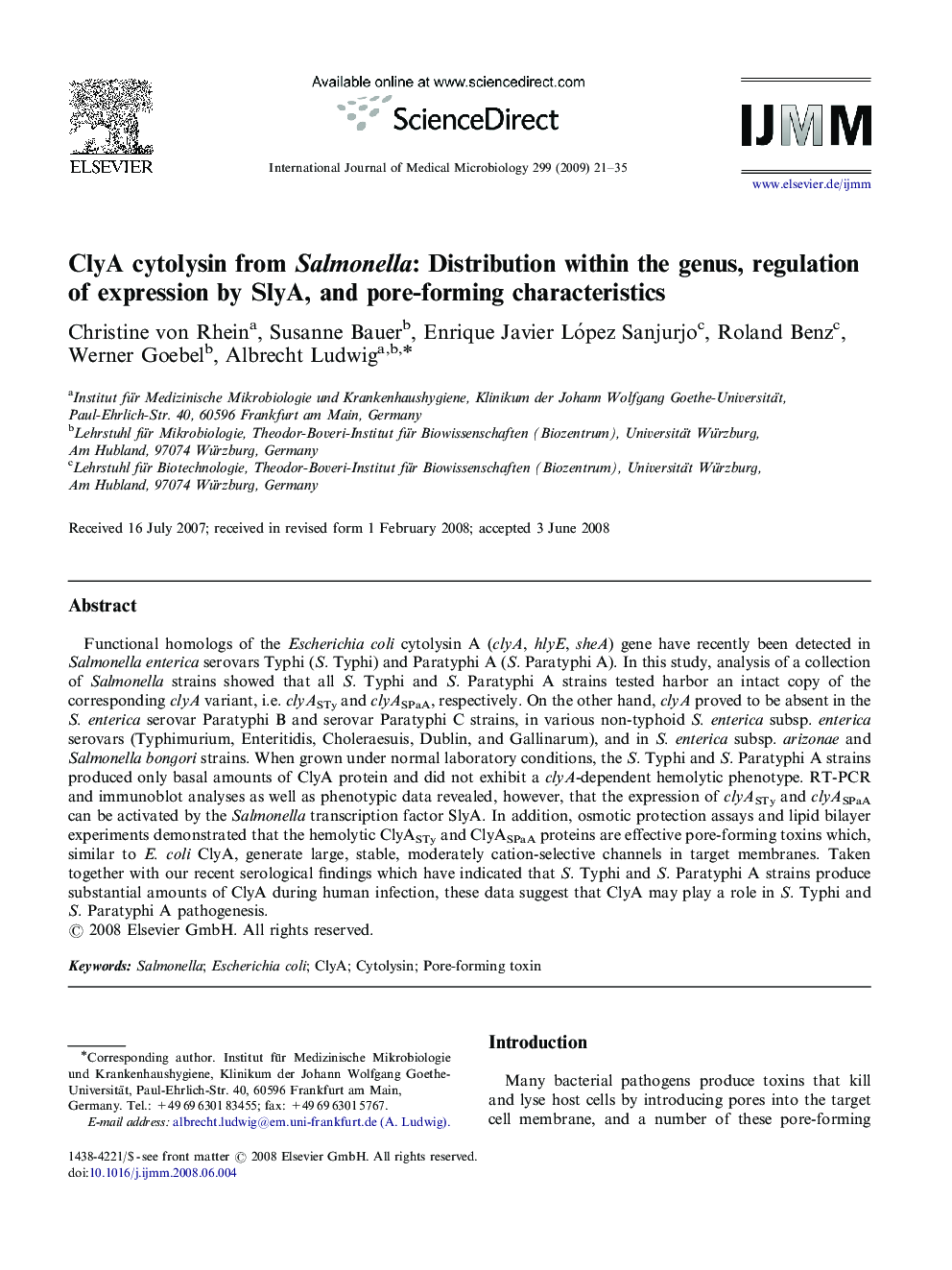| Article ID | Journal | Published Year | Pages | File Type |
|---|---|---|---|---|
| 2054912 | International Journal of Medical Microbiology | 2009 | 15 Pages |
Functional homologs of the Escherichia coli cytolysin A (clyA, hlyE, sheA) gene have recently been detected in Salmonella enterica serovars Typhi (S. Typhi) and Paratyphi A (S. Paratyphi A). In this study, analysis of a collection of Salmonella strains showed that all S. Typhi and S. Paratyphi A strains tested harbor an intact copy of the corresponding clyA variant, i.e. clyASTy and clyASPaA, respectively. On the other hand, clyA proved to be absent in the S. enterica serovar Paratyphi B and serovar Paratyphi C strains, in various non-typhoid S. enterica subsp. enterica serovars (Typhimurium, Enteritidis, Choleraesuis, Dublin, and Gallinarum), and in S. enterica subsp. arizonae and Salmonella bongori strains. When grown under normal laboratory conditions, the S. Typhi and S. Paratyphi A strains produced only basal amounts of ClyA protein and did not exhibit a clyA-dependent hemolytic phenotype. RT-PCR and immunoblot analyses as well as phenotypic data revealed, however, that the expression of clyASTy and clyASPaA can be activated by the Salmonella transcription factor SlyA. In addition, osmotic protection assays and lipid bilayer experiments demonstrated that the hemolytic ClyASTy and ClyASPaA proteins are effective pore-forming toxins which, similar to E. coli ClyA, generate large, stable, moderately cation-selective channels in target membranes. Taken together with our recent serological findings which have indicated that S. Typhi and S. Paratyphi A strains produce substantial amounts of ClyA during human infection, these data suggest that ClyA may play a role in S. Typhi and S. Paratyphi A pathogenesis.
